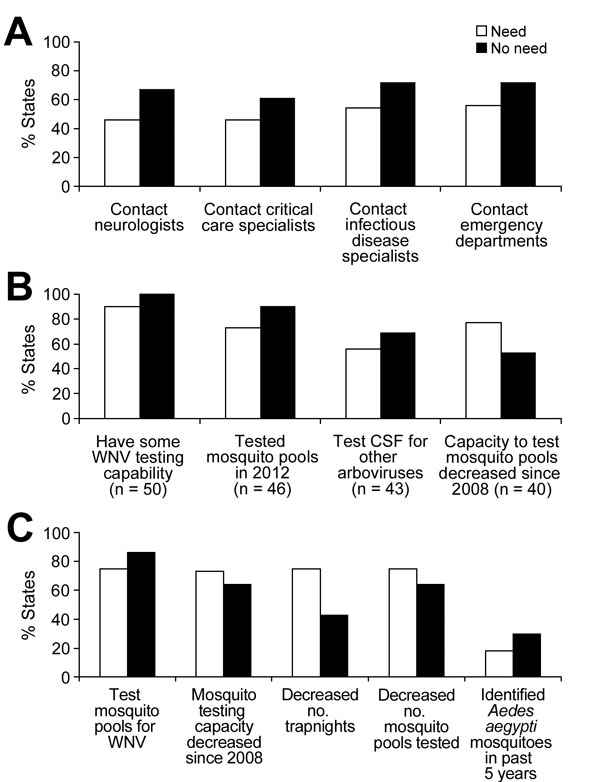Volume 21, Number 7—July 2015
Research
Assessment of Arbovirus Surveillance 13 Years after Introduction of West Nile Virus, United States1
Figure 2

Figure 2. Comparison of surveillance indices in states reporting need for additional staff with those not reporting a need by type of staff needed, United States, 2012. A) Epidemiologists; B) Laboratory staff; C) Mosquito surveillance staff. WNV, West Nile virus; CSF, cerebrospinal fluid. Values in parentheses are number of states.
1A shorter version of this report has been published previously (1).
Page created: June 12, 2015
Page updated: June 12, 2015
Page reviewed: June 12, 2015
The conclusions, findings, and opinions expressed by authors contributing to this journal do not necessarily reflect the official position of the U.S. Department of Health and Human Services, the Public Health Service, the Centers for Disease Control and Prevention, or the authors' affiliated institutions. Use of trade names is for identification only and does not imply endorsement by any of the groups named above.